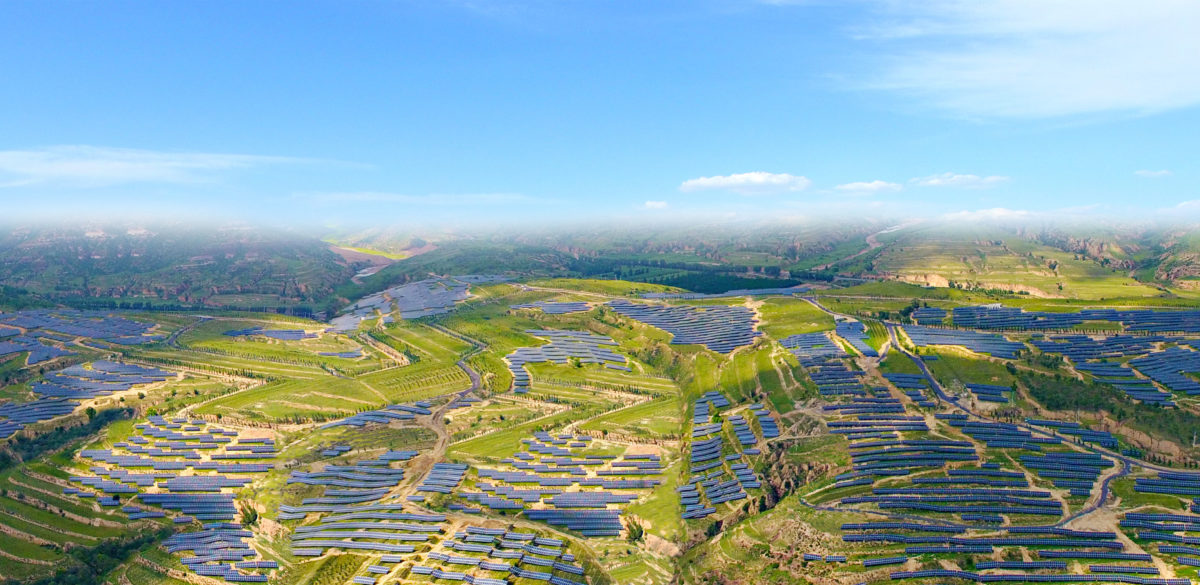String inverters become the mainstream
According to IHS Markit, Wood Mackenzie, and other leading market researchers, the global market share of string inverters over central solutions continues to increase, and surpassed that of central inverters for the first time in 2017. Smart string inverters provide high efficiency, high availability, and multiple maximum power point trackers (MPPTs) to bring in higher energy yields. Without vulnerable parts or fuses, string inverters can reduce the initial investment and opex while simultaneously increasing PV system reliability. Huawei says that BOS costs can be reduced by 4.5 cents per watt.
1500 V as standard
With lower costs and higher efficiency, the 1500 V system is becoming a mainstream solution for large-scale, ground-mounted PV plants, particularly in emerging markets. According to data from IHS Markit, the shipment of 1500 V solutions for large-scale, ground-mounted PV plants in 2018 (excluding China) reached a 62% market share.
The 1500 V inverter solution is used for global low electricity price markets and non-subsidized PV projects, and has been widely adopted in India, the Middle East, and Latin America. Compared with the 1100 V system, the 1500 V system has a higher voltage and longer string length, reducing the equipment, cable, and construction costs. A project’s BOS costs can again be reduced by approximately five cents per watt, according to Jeff Yan, senior product manager at Huawei.
“The 1500 V devices, including inverters, have been delivered on a large scale in 2018 as the first choice for utility-scale, ground-mounted PV plants,” says Yan. “After seven years of the concept period, new product period, and verification period, we are achieving grid parity.”
Bifacial module+string inverter+tracker
With the popularization and application of bifacial PV modules in combination with trackers, the upgrade of supporting inverters becomes inevitable. “Smart string inverters reduce the loss of string mismatch and integrate support control, power supply, and communication management at the same time, which greatly improves the energy yield of the system,” says Yan. He also gives an example, explaining that the measured data of a PV plant in Qinghai, China shows that the energy yield of a PV plant using the bifacial PV modules+trackers+Huawei smart string inverters solution is increased by more than 20%.
PV+storage systems
Energy storage is of great importance to the global energy transition. Due to cost factors, the industrialization of PV+storage is still in the stage of subsidy-driven development. However, the pace of marketization of PV+storage is accelerating. The application of the PV storage systems will further drive the evolution of the inverters to be the energy management center for PV plants.
Proactive safety protection
There is no doubt that a PV plant’s value is strongly influenced by its safety features, particularly when it comes to the rooftop segment. Inverters, with functions such as DC arcing detection and safety shutdown of PV modules, evolve the safety protection of PV plants from passive to active.
Digitalization, intelligence, and AI
In the high-speed development of solar PV globally, the effect of reducing costs using traditional methods has reached its limit. The digital transformation of the PV industry has become a trend. In the future, the PV industry will be digitalized.
With the development of technologies such as big data, cloud computing, Internet of Things (IoT), and mobile interconnection, the PV industry will achieve visualized management and high O&M efficiency. The PV system will be inverter-oriented, and its digitalization and intelligence will continue to improve. In addition to energy yield and O&M efficiency gains, the ultimate platform for future comprehensive energy services is emerging.
Smart I-V curve diagnosis
While AI technology will be gradually integrated into PV solutions, Huawei is already driving this intelligence forward with its extensive Smart I-V Curve Diagnosis, which is able to carry out online analysis of entire strings with advanced diagnosis algorithms.
On-site inspection becomes unnecessary, with the ability to perform remote diagnosis in one-click mode. According to the company, a comprehensive diagnosis report for a 100 MW PV plant can be generated in 15 minutes.
These six major trends of inverter technology today are vitally interrelated with the PV industry’s core objectives of cost reduction, efficiency improvement, and intelligent upgrades – all of which provide the opportunity to lower the LCOE and accelerate grid parity.
This content is protected by copyright and may not be reused. If you want to cooperate with us and would like to reuse some of our content, please contact: editors@pv-magazine.com.
